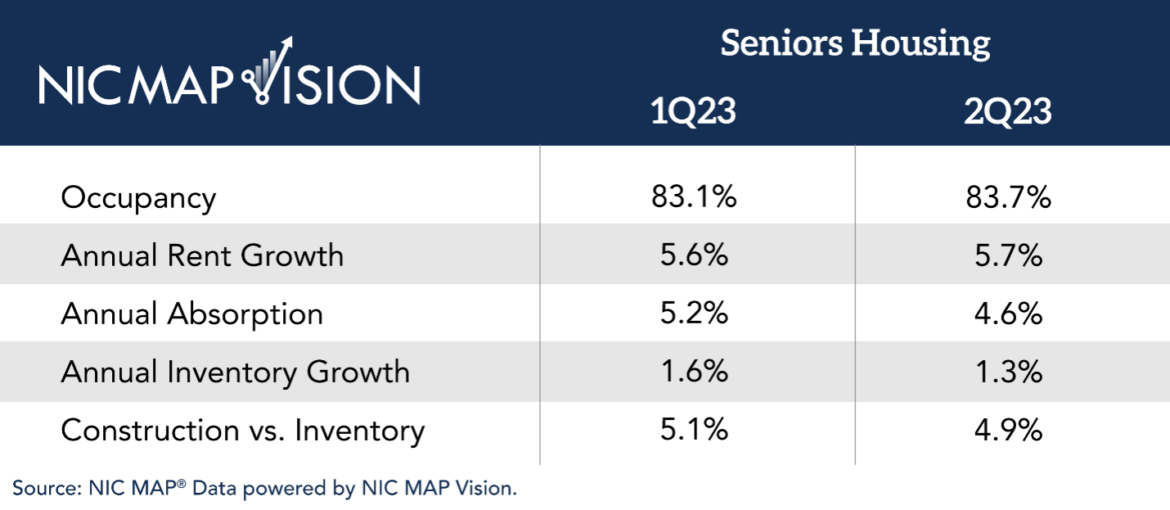ANNAPOLIS, Md. — The occupancy rate for private-pay seniors housing rose 60 basis points to 83.7 percent in the second quarter of 2023, according to data from NIC MAP Vision. It is the eighth consecutive quarter where occupancy has increased as the industry continues to recover from impacts of the COVID-19 pandemic.
The occupancy number is a 590 basis point increase over the pandemic low of 77.8 percent in second-quarter 2021, but still short of the pre-pandemic mark of 87.1 percent in first-quarter 2020.
NIC MAP Vision is a product of the National Investment Center for Seniors Housing & Care (NIC), an Annapolis-based nonprofit firm that tracks industry data gathered from 31 primary metropolitan markets. Private-pay seniors housing comprises independent living, assisted living and memory care.
The number of occupied units increased 0.9 percent in the second quarter, while total units for seniors housing grew by only 0.2 percent. Compared with year-earlier levels, inventory increased by 1.3 percent, the slowest growth since 2012.
“Continued solid demand for seniors housing, paired with relatively slow growth in inventory, has contributed to the current occupancy recovery,” says Caroline Clapp, NIC’s senior principal for research and analytics. “This is the longest period of occupancy rate gains NIC has ever observed, yet occupancy is still below where it was at the start of the pandemic.”
Units under construction amounted to 4.9 percent of total existing seniors housing inventory, down 280 basis points from the high of 7.7 percent recorded in the fourth quarter of 2019. It is the lowest level of construction since 2014.
“Higher interest rates and challenges obtaining financing have continued to slow construction starts activity,” says Chuck Harry, NIC’s chief operating officer. “This bodes well for continued improvement in the occupancy rates over the next couple of years, as new inventory coming online will remain limited.”
NIC experts note that occupancy at assisted living properties is recovering faster than occupancy at independent living properties likely due to the more needs-based demand of assisted living properties.
To view the full report, click here.

